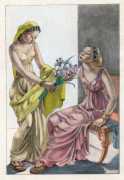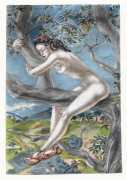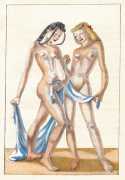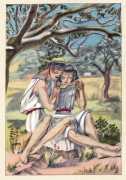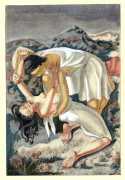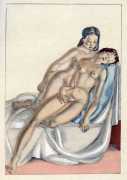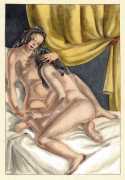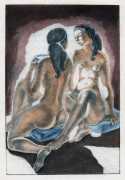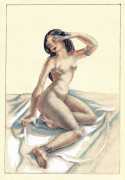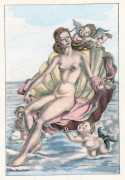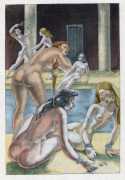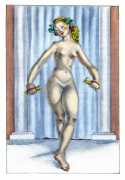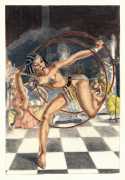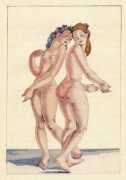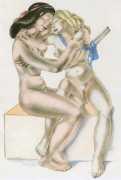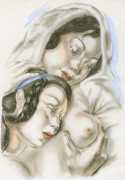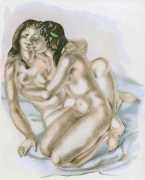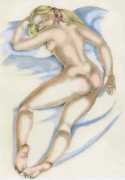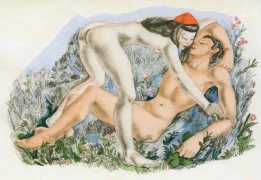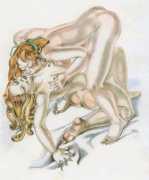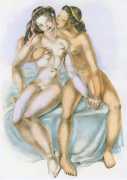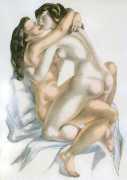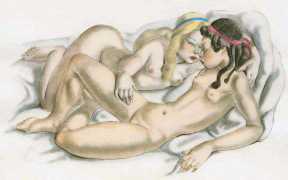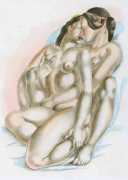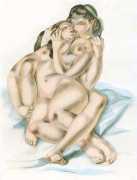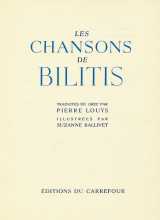 Pierre Louÿs’ Les chansons de Bilitis (The Songs of Bilitis) is a collection of erotic lesbian poetry first published in Paris in 1894, and one of the most successful literary frauds of all time; most of Louÿs’ early readers honestly believed that they were reading genuine translations of rediscovered ancient poetry found on the walls of a tomb in Cyprus, written by a woman called Bilitis who was a courtesan and contemporary of Sappho.
Pierre Louÿs’ Les chansons de Bilitis (The Songs of Bilitis) is a collection of erotic lesbian poetry first published in Paris in 1894, and one of the most successful literary frauds of all time; most of Louÿs’ early readers honestly believed that they were reading genuine translations of rediscovered ancient poetry found on the walls of a tomb in Cyprus, written by a woman called Bilitis who was a courtesan and contemporary of Sappho.
In the 143 poems Bilitis shares her most intimate thoughts, from childhood innocence in Pamphylia to the loneliness and chagrin of her later years. To lend authenticity to the forgery, Louÿs listed some poems as ‘untranslated’; he even craftily fabricated an entire section of his book called ‘The Life of Bilitis’, crediting a fictional German archaeologist as the discoverer of Bilitis’ tomb. Though Louÿs displayed great knowledge of ancient Greek culture, ranging from children’s games to the application of scents, the literary fraud was eventually exposed. This did little to taint its literary value, and Louÿs’ open and sympathetic celebration of lesbian sexuality earned him both popularity and historic significance. Although for the most part Les chansons de Bilitis is original work, many of the poems were reworked epigrams from the Palatine Anthology, and Louÿs even borrowed some verses from Sappho herself. The poems are a blend of mellow sensuality and polished style in the manner of the Parnassian school, but underneath run subtle French undertones that Louÿs could never escape.
Two new illustrated editions of Bilitis appeared in 1943 – this, Suzanne Ballivet’s first overtly erotic illustration commission, and an edition illustrated by Bécat, which you can see here. The Ballivet illustrations set a style and a standard for most of her more explicit work, the girls’ faces and figures being unmistakably her handiwork.
In addition to the illustrations that were included in the published book, there exist a further thirteen watercolours by Suzanne Ballivet which were almost certainly intended for Bilitis but were not included; these are now in the Kinsey Collection and are shown here after the sixteen published plates. Given that they are generally more explicit than the ones in the book, it is probable that they were her first submission for the commission, but she was asked to replace most of them with slightly less suggestive alternatives.
The Ballivet-illustrated Bilitis was published by Éditions du Carrefoure in a limited numbered edition of 1,225 copies.


